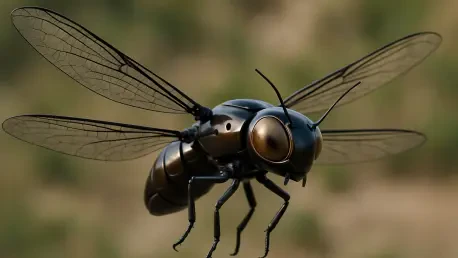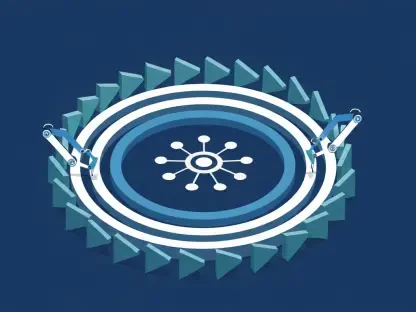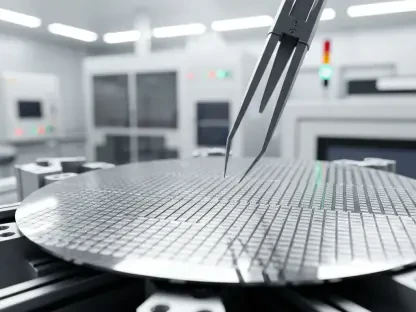Welcome to an exciting conversation with Oscar Vail, a trailblazing technology expert whose innovative work in robotics and drone technology is pushing boundaries. With a deep passion for emerging fields like quantum computing and open-source projects, Oscar has been at the forefront of designing bio-inspired aerial vehicles. Today, we dive into his groundbreaking work on a seed-inspired monocopter, exploring how nature’s designs are revolutionizing small drones, the role of AI in optimization, and the future of efficient flight systems. Join us as we uncover the journey from concept to creation in this fascinating intersection of biology and engineering.
Can you tell us what sparked the idea of designing a monocopter based on a maple seed, and why this particular natural model stood out to you?
The idea came from observing how nature often solves complex problems with elegant simplicity. Maple seeds, or samaras, have this incredible ability to autorotate as they fall, creating lift and stability with minimal energy. I was fascinated by how every part of the seed contributes to its flight, and I thought, why not mimic that efficiency in a drone? Unlike other natural flyers, the samara’s spinning motion offered a unique way to combine passive stability with active control, making it an ideal blueprint for a lightweight, single-rotor design.
How has your perspective on drone design evolved over the past decade, especially when comparing earlier multi-rotor projects to this latest monocopter innovation?
Over the last ten years, my focus has shifted from brute-force engineering to efficiency-driven design. Early on, with multi-rotor drones, we were pushing for longer flight times by scaling up size and power, but that often meant heavy, complex systems that were inherently inefficient. The biggest lesson was that more components don’t always mean better performance. With the monocopter, I embraced minimalism—drawing from nature and rethinking how to achieve flight with fewer parts. It’s been a journey of learning to do more with less, prioritizing aerodynamic finesse over raw thrust.
What are the main reasons small drones typically struggle with endurance, and how does this challenge impact their practical use?
Small drones often have poor endurance because their tiny propellers generate limited thrust while still consuming a lot of power. As you scale down, the efficiency of traditional designs like quadcopters drops dramatically due to aerodynamic losses and the high energy cost of maintaining stability with multiple motors. This severely limits their use in applications requiring long flight times, like surveillance or environmental monitoring. It’s a fundamental barrier that forces a trade-off between size and capability, which is why we’ve had to rethink the entire approach to small aerial systems.
How does your monocopter address these endurance issues, and what makes it stand out from conventional small drones?
Our monocopter tackles endurance by simplifying the system to a single actuator and leveraging autorotation, much like a maple seed. This design cuts down on power-hungry components and uses a large, optimized wing to generate lift efficiently through spinning. Compared to quadcopters, which need constant adjustments from multiple motors, our monocopter relies on passive dynamics for stability, saving energy. The result is a 26-minute flight time at just 32 grams, which is remarkable for this weight class and opens up possibilities for longer missions without bulking up the drone.
Can you walk us through the mechanics of how a monocopter achieves stable flight with just one motor, and what makes this simplicity so powerful?
The monocopter operates on a beautifully simple principle: a single motor drives the entire winged body into a controlled spin. This rotation creates lift across the airfoil, much like a helicopter blade, while the spinning motion itself provides gyroscopic stability without needing extra control surfaces. The simplicity is powerful because it reduces weight, cuts energy costs, and minimizes points of failure. Unlike multi-rotor drones that need complex coordination between motors, this design achieves full controllability with one moving part, which is a game-changer for efficiency and reliability.
Your team incorporated AI to optimize the wing design. Can you share how this technology shaped the development process and influenced the final outcome?
Using AI for optimization was a critical step in refining the monocopter. We employed data-driven algorithms to explore countless variations of wing shape, pitch angle, and mass distribution—far more than we could test manually. The AI acted like a super-efficient assistant, modeling aerodynamic performance and suggesting tweaks based on real-world data. This let us hone in on a design that maximized lift and minimized power draw. Combining human intuition with AI’s precision gave us a wing that truly mirrors the efficiency of a maple seed, something we couldn’t have achieved through trial and error alone.
Achieving a 26-minute flight time in such a small drone is impressive. What were the key design choices that helped you reach this milestone?
The 26-minute flight time came down to a few critical decisions. First, we focused on aerodynamic efficiency by designing a large, lightweight wing that generates maximum lift during rotation. Second, using a single actuator eliminated the power drain of multiple motors. We also fine-tuned the mass distribution to ensure stability without extra weight, and AI optimization helped us balance every element for minimal energy loss. Every gram and watt was accounted for, ensuring the drone could hover longer than most in its class while still being fully controllable.
What is your forecast for the future of bio-inspired drone technology, especially regarding potential applications and advancements?
I’m incredibly optimistic about the future of bio-inspired drones. We’re just scratching the surface of what nature can teach us, and I see these designs evolving into highly efficient platforms for a range of applications—from low-cost weather monitoring with reusable radiosondes to precision agriculture and urban surveillance. Advancements in materials and custom components will likely push flight times and payload capacities even further. We might also see more complex bio-mimicry, like adaptive wings inspired by birds or insects, integrated with AI for real-time optimization. The potential is limitless, and I believe these small, mighty systems will play a huge role in sustainable aerial solutions over the next decade.









